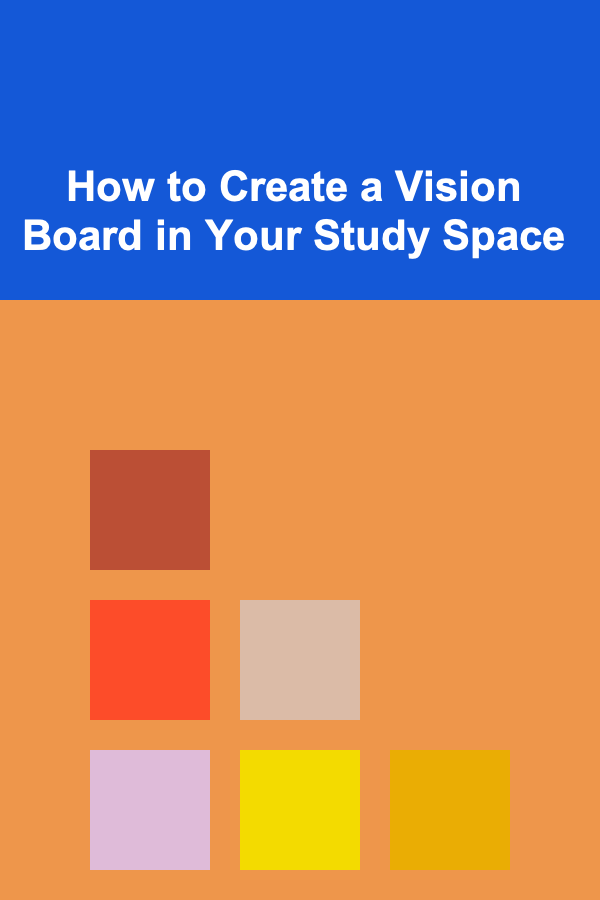
How to Transition into UX Design From Another Field
ebook include PDF & Audio bundle (Micro Guide)
$12.99$11.99
Limited Time Offer! Order within the next:
Not available at this time

The world of user experience (UX) design is dynamic, creative, and increasingly in-demand. As businesses and organizations shift their focus to providing optimal user experiences, the need for skilled UX designers has never been higher. For many individuals from different professional backgrounds, UX design presents an exciting opportunity to transition into a field that blends creativity, problem-solving, and technology.
Transitioning into UX design from another field may seem daunting, but with the right approach, it's entirely achievable. Whether you're coming from graphic design, software engineering, marketing, business, or any other field, the transferable skills you have can set the foundation for a successful career in UX. In this article, we'll explore how to make the shift to UX design, detailing the steps, strategies, and resources that will help you make this transition effectively.
Understanding UX Design
Before diving into the transition process, it's important to fully understand what UX design is and what it entails. UX design is about improving the overall experience of a user when interacting with a product, whether that's a website, mobile app, software application, or even physical products. UX designers focus on aspects like usability, accessibility, and how intuitive a product is.
In a broader sense, UX design isn't just about the visual appearance of a product (though UI or user interface design plays a role), but about making sure the product or service meets users' needs and is functional and enjoyable to use. The design process typically involves research, prototyping, user testing, and iteration to ensure the final product offers the best possible user experience.
Why Transition into UX Design?
There are many reasons why transitioning into UX design could be a smart career move. Here are a few:
- High Demand: As technology continues to evolve, more companies are focusing on the user experience. This has created a surge in demand for skilled UX designers.
- Career Growth: UX design offers a range of roles, including UX researcher, UX/UI designer, interaction designer, and usability tester, each offering potential for professional growth and advancement.
- Creative & Analytical Balance: UX design allows you to flex both creative and analytical muscles, as it requires problem-solving, empathy, and an understanding of human behavior.
- Impact: UX designers play a pivotal role in shaping how users interact with products, meaning their work can have a significant impact on people's daily lives.
Identifying Transferable Skills
One of the keys to successfully transitioning into UX design is identifying and leveraging the transferable skills you already possess. Depending on your background, you may already have many skills that are highly relevant to UX design. Let's break down some of these skills:
1. Empathy
Empathy is one of the most important qualities of a UX designer. Whether you're in a customer service role, a teaching profession, or another user-centered field, the ability to understand and relate to people's needs is invaluable. In UX, empathy is used to create designs that resonate with users, solve their problems, and enhance their experience.
2. Problem Solving
If you've worked in a role that involved troubleshooting, critical thinking, or developing solutions to complex problems (e.g., in engineering, marketing, or product management), you're already equipped with the core problem-solving skills that are vital for UX design. UX design is all about identifying user pain points and developing creative, functional solutions.
3. Communication
UX design requires clear and effective communication, both written and verbal. Whether you're explaining a design concept, conducting user interviews, or collaborating with other stakeholders, the ability to convey ideas is crucial. If you come from a field where communication was key (e.g., teaching, sales, consulting), this will serve you well in UX.
4. Project Management and Collaboration
In many fields, you've likely had experience in managing projects, working with teams, and collaborating with different stakeholders. In UX design, you'll work closely with developers, product managers, marketers, and other team members, often managing projects that involve multiple stages. If you have a background in project management or teamwork-based environments, these skills are directly applicable.
5. Design Thinking and Creativity
If you've worked in any creative capacity---whether in graphic design, advertising, or another design-related field---you likely have an understanding of design principles, user-centric thinking, and visual communication. Even if you're not a designer, your experience thinking creatively to solve problems is a valuable asset.
Steps to Transition into UX Design
Once you've identified your transferable skills, the next step is to begin the process of learning and transitioning into UX design. Below are the key steps you should follow to make this shift successfully.
1. Learn the Basics of UX Design
To transition into UX design, you must first learn the fundamental principles, processes, and tools of the trade. Understanding the end-to-end process is crucial, as UX design is not limited to just the visual aspects of design but encompasses research, wireframing, prototyping, testing, and iteration.
Key Areas to Study:
- User Research: Learn how to gather insights about users through interviews, surveys, and usability testing.
- Wireframing & Prototyping: Get comfortable with tools like Figma, Sketch, and Adobe XD for creating wireframes and prototypes.
- Information Architecture: Understand how to structure and organize information in a way that is intuitive for users.
- Usability Testing: Learn how to conduct testing to evaluate the effectiveness of a design and make necessary adjustments.
- Interaction Design: Study how users interact with digital products and how to design those interactions.
2. Take UX Design Courses
Formal education or self-paced courses can provide a solid foundation in UX design. There are a wealth of online platforms offering comprehensive UX design programs, including:
- Coursera (e.g., Google UX Design Certificate)
- Udemy (e.g., UX Design Fundamentals)
- Interaction Design Foundation
- LinkedIn Learning
These courses typically cover everything from beginner concepts to advanced techniques, allowing you to learn at your own pace and build a strong understanding of UX principles.
3. Gain Hands-On Experience
Practical experience is essential to developing your UX skills. Start working on real-world projects, even if they are personal or pro bono. This will allow you to apply the theoretical knowledge you've gained and build a portfolio, which is key when breaking into the field.
Ways to Gain Experience:
- Freelancing: Offer your services on platforms like Upwork, Freelancer, or Fiverr to work with small businesses or startups.
- Personal Projects: Create mockups, redesign websites or apps, or come up with new ideas for improving user experiences in existing products.
- Volunteer Work: Volunteer for non-profit organizations or local businesses that need UX design help. This provides valuable experience while also giving back to the community.
- Internships: While not always necessary, internships can help you gain structured experience and learn from industry professionals.
4. Build a Portfolio
Your portfolio is your most important tool when transitioning into UX design. It showcases your skills, processes, and the work you've done. Ensure your portfolio is diverse, showing a range of projects, including user research, wireframes, prototypes, and final designs.
Key Portfolio Tips:
- Showcase the Process: Employers want to see how you approach problems and arrive at solutions, so be sure to include your thought process and rationale behind your designs.
- Diversity: Include various types of projects, such as websites, mobile apps, and user interfaces, to show your versatility.
- Keep it Simple and Professional: A clean, easy-to-navigate portfolio site will give potential employers a positive impression of your design sensibility.
5. Network and Connect with the UX Community
Building connections in the UX design community can be invaluable. Networking helps you stay updated on industry trends, learn from other professionals, and discover job opportunities. Engage with UX communities both online and offline by attending meetups, webinars, and conferences.
Ways to Network:
- LinkedIn: Connect with professionals in the UX field and engage in UX-focused discussions.
- Online UX Communities: Join forums like UX Design on Reddit, Designer Hangout, or Slack channels.
- Meetups & Conferences: Attend UX conferences or local meetups to meet other designers and learn from their experiences.
6. Stay Up-to-Date and Continue Learning
The field of UX design is constantly evolving with new tools, technologies, and methodologies. To stay competitive, it's important to continue learning. Follow UX blogs, participate in online courses, and seek mentorship to ensure you're always growing as a designer.
7. Apply for UX Design Jobs
Once you've built a portfolio and gained enough experience, start applying for UX design roles. Tailor your resume and portfolio to each job description, highlighting your relevant skills and experiences.
Types of UX Roles to Consider:
- Junior UX Designer
- UX Researcher
- UX/UI Designer
- Interaction Designer
- Product Designer
If you're still in the early stages of your career, consider applying for internships or contract roles to build more experience and expand your skill set.
Overcoming Challenges
While transitioning into UX design can be rewarding, it's important to acknowledge that the process may be challenging. You may face competition from other aspiring designers or encounter difficulties in mastering new skills. It's crucial to stay motivated, persistent, and open to feedback.
Remember that the journey to becoming a UX designer is not a race---it's a process of learning and growing. By embracing new challenges and continuing to develop your skills, you'll soon find yourself on a fulfilling and impactful career path.
Conclusion
Making the transition into UX design from another field is entirely possible with the right preparation, mindset, and dedication. By leveraging your transferable skills, learning the necessary tools and principles, gaining hands-on experience, and building a solid portfolio, you can successfully break into the world of UX design.
The UX design field offers exciting opportunities for creative individuals who are passionate about improving user experiences. As long as you remain committed to learning and growing, the transition will be both fulfilling and rewarding. Stay curious, stay determined, and let your journey into UX design begin!

How to Create a Vision Board in Your Study Space
Read More
How to Set Up a Family Fitness Routine at Home
Read More
Smart Strategies for Utilizing Public Wi-Fi for Internet Access Without Compromising Privacy
Read More
How to Express Your Opinions Without Spoilers
Read MoreImplementing Blockchain for Art Provenance Tracking: A Comprehensive Guide
Read More
How to Grow Your Own Herbs for Fresh Flavors
Read MoreOther Products

How to Create a Vision Board in Your Study Space
Read More
How to Set Up a Family Fitness Routine at Home
Read More
Smart Strategies for Utilizing Public Wi-Fi for Internet Access Without Compromising Privacy
Read More
How to Express Your Opinions Without Spoilers
Read MoreImplementing Blockchain for Art Provenance Tracking: A Comprehensive Guide
Read More